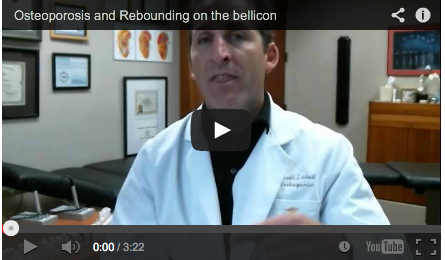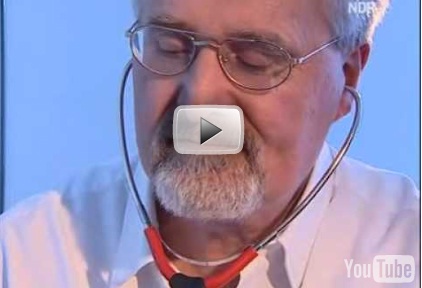Osteoporosis? This is how you can help yourself: |
Understand how bones function
Get the Rebounder that works best for you
Not sure which one? Ask us. We are Rebounding trainers since 20 years and are happy to support you in finding your ideal rebounder.
- Already in 1980, NASA published that Rebounding strengthens the bones and increased bone density.
- Our customers experienced that with ten minutes of daily rebounding, their bone density came back to normal and reversed their Osteopenia within one and a half years.
- In Germany, medical studies done by the "Board for Preventive Medicine" have shown that Rebounding can stop the decrease of bone density due to Osteoporosis. The following video clips document those studies:
Scientific Studies:
Study #1: A Study of the Journal of Sport and Health Science of December 2016 shows that trampolining influences bone strength. It says: "Trampolinists' bone size and strength at both the radius and tibia was higher than controls. Furthermore, trampolinists have denser and thicker trabeculae coupled with a larger bone adding to higher bone strength.”  Read the study.
Read the study.
Study #2: A Study of the Journal of the Medical Association of Thailand of September 2015 shows not only the benefits to bone mineral density, it also includes overall fitness-related benefits that may have some correlation to lymphedema.
The study showed that performing the floor exercises on a mini-trampoline (rebounder)
- Increased bone formation and decreased bone resorption
- Improved health-related fitness, balance, leg muscular strength
Study #3:
A study of the Journal of Sports Science and Medicine in 2009 found that even a single bout of high-impact exercise can increase bone turnover. Study participants jumped up and down until they were exhausted. Afterwards, markers of bone formation (procollagen type I amino terminal propeptide [P1NP] and bone resorption (carboxyterminal crosslinked telopeptide [CTx]) were both elevated, signifying that the body was busily fixing the damage and rebuilding the bones to be stronger. Read more about this study.
Read more about this study.


